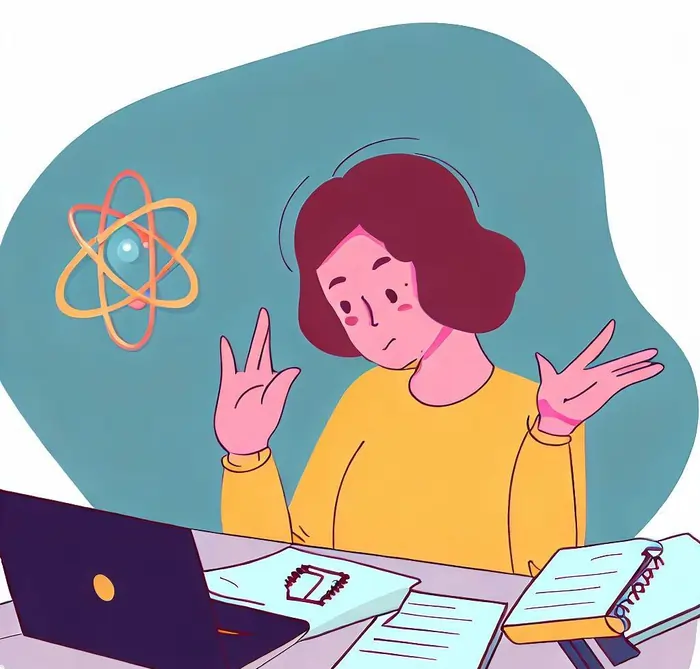Disposable and Non-Disposable Physics Assignments: Understanding Their Significance and Differences

The fundamental concepts and laws that govern the natural world are better understood by students thanks in large part to their work on physics assignments. Disposable and non-disposable assignments are separated into two distinct categories. Disposable physics assignments are intended to be finished quickly, frequently as a one-time project or as regular homework. They are primarily intended to reinforce ideas presented in lectures or textbooks and foster the practice of problem-solving abilities.
Non-disposable physics assignments, on the other hand, include tasks that demand a greater level of involvement and time commitment from students. These assignments usually take the form of lengthy projects, research papers, or experimental studies that explore intricate phenomena or go deeper into particular subjects. They offer opportunities for students to carry out independent research, develop critical thinking abilities, and apply theoretical knowledge to actual situations.
Students must comprehend the importance of and distinctions between disposable and non-disposable physics assignments if they are to get the most out of their educational experience. Non-disposable assignments encourage in-depth analysis, research skills, and the capacity for creative thought, whereas disposable assignments emphasize consistent practice and concept consolidation. Students gain a thorough understanding of physics assignment and hone crucial skills required for professional success by working on both kinds of assignments.

Disposable Physics Assignments: Transient Learning Aids:
A one-time-use learning tool created by a student is, in essence, what is meant by a disposable assignment. The main goal of these assignments is to make it easier for students to understand basic physics concepts right away. These tasks typically take the form of practice problem sets, online tests, end-of-chapter inquiries, and other similar exercises. Disposable assignments are primarily intended to give students a platform where they can apply what they've learned, receive immediate feedback, and improve their understanding.
Disposable assignments are important despite being transient. Because they make it easier to practice and apply recently learned theories or concepts, they are crucial to the learning process of physics. Students can correct errors right away and solidify their understanding thanks to the immediate feedback. These tasks serve as the student's stepping stones as they cross the river of knowledge toward the solid ground of understanding, providing stability and support.
There is a catch, though. Disposable assignments are frequently used only once during the initial learning process because they are designed for immediate use and feedback. The assignment becomes redundant and is frequently discarded once it has been finished and feedback has been received. A worksheet on Newton's Laws, for instance, might aid a student in understanding these ideas, but once it has been completed, the worksheet has served its purpose and is usually forgotten. Due to the temporary nature of disposable assignments, we now turn to the alternative: non-disposable assignments.
Long-Term Learning Assets: Non - Disposable Physics Assignments:
Non-disposable assignments are long-lasting learning tools that are intended to transcend their immediate instructional context, in stark contrast to their disposable counterparts. Students design these assignments for a bigger, longer-term goal rather than just for immediate use or feedback. Projects like writing a thorough research paper, designing a scientific experiment, producing an instructional video on a Physics concept, designing a blog about Physics, or even creating a game or app with a Physics theme are examples of non-disposable assignments in the subject.
The benefit of non-disposable assignments is that by connecting theory to actual application, they help students gain a deeper understanding of physics. For instance, if a student makes a tutorial video outlining the theory of relativity, they not only gain in-depth knowledge of the subject but also improve their communication, creativity, digital literacy, and other skills. The fact that these assignments can be shared with other students makes them useful to the larger educational community. Non-disposable assignments assist students in developing as contributors to the body of knowledge rather than just consumers in some ways.
Non-disposable assignments last a long time, which means they have an impact on students' learning processes. For instance, a research paper on quantum mechanics can be used as a resource for years, aiding the student in remembering the idea and providing a jumping-off point for further investigation. Additionally, these assignments frequently result in the creation of portfolio pieces that students can display. These portfolio pieces serve as proof of students' knowledge and skills, which can be especially useful for college applications or job searches.
Finding a Balance Between Disposable and Non-Disposable Physics Assignments:
After examining disposable and non-disposable assignments separately, it is critical to realize that they are not exclusive. A successful Physics education strategy frequently combines the two to produce a well-rounded learning environment that meets a variety of learning goals.
Disposable assignments are essential during the early stages of learning a new physics concept. They offer repetition that solidifies understanding and the quick correction of misconceptions. Nevertheless, learning doesn't stop there. After learning the fundamentals, non-disposable assignments can advance learning. Students gain a deeper understanding of the concept and gain a variety of skills that are crucial in today's connected and digital world by applying them in a practical setting or creative project.
In achieving this balance, educators are essential. They can create an engaging curriculum that fosters both immediate understanding and long-term learning by understanding the benefits and drawbacks of both disposable and non-disposable assignments. This integrated approach contributes to the development of a stimulating and enjoyable learning environment for Physics, ultimately enabling students to succeed in both their academic and professional endeavors.
Using the Best Practices for Disposable and Non-Disposable Assignments:
The ability to implement these kinds of tasks successfully within a Physics curriculum is just as crucial as understanding the distinctions between disposable and non-disposable assignments. Here, we'll look at a few recommendations for both.
It's essential to provide prompt, thorough feedback for disposable assignments. Along with providing suggestions for improvement, this feedback should explain why the student's response is incorrect in addition to highlighting the errors they made. Further enhancing the learning process is the provision of chances for revision or additional practice problems on the same subject.
Disposable assignments should also closely match the learning goals for a particular unit or lesson. For instance, if you're teaching kinematics, the disposable assignments should give students the chance to apply kinematic equations, forecast motion, and examine motion graphs. The relevance of the material can be reinforced and engagement increased by making clear connections between assignments and learning objectives.
Giving students clear instructions and rubrics for non-disposable assignments is crucial. Students need to be aware of what is expected of them and how they will be judged from the start of these assignments because of their greater complexity and length. Think about giving students some choice in these assignments as well. Let students select which principle they want to concentrate on, for instance, if the assignment is to create a demonstration of a physics principle.
Additionally, non-disposable tasks frequently gain from frequent check-ins or progress reports. In this manner, educators can make sure that students are on track and offer assistance or guidance as required. As a result of these tasks' greater complexity, students may occasionally feel overwhelmed; for this reason, it's crucial to divide them into more manageable chunks and provide frequent feedback.
Technology's Function in Disposable and Non-Disposable Assignments:
Both disposable and non-disposable Physics assignments in the modern era involve a significant amount of technology. Online platforms for disposable assignments can offer immediate feedback, extra practice problems, and even adjust difficulty levels based on a student's performance.
Disposable assignments can also be made more engaging and interactive with the help of technologies like simulation software. Students can deepen their understanding by using these tools to manipulate variables and visualize the results rather than just solving equations on paper.
The scope and impact of non-disposable assignments, however, can be greatly increased thanks to technology. Students could, for instance, use programming languages to develop interactive physics simulations or video editing software to produce excellent demonstration videos. Students can deepen their understanding of Physics through these assignments, and they can also develop digital skills, which are becoming more and more important in the modern workplace.
A global audience can also access non-disposable assignments thanks to the internet. A student's blog post, video, or online presentation may aid students all over the world in understanding difficult concepts in physics. Non-disposable assignments have the potential to be incredibly fulfilling for students because of their ability to contribute to the global learning community.
Conclusion:
Finally, disposable and non-disposable physics homework assignments have different effects on improving students' comprehension of the subject. Disposable assignments offer frequent opportunities for practice, reinforcing concepts taught in class and fostering the development of problem-solving abilities. They assist students in developing a strong foundation in physics and enhance their exam performance.
On the other hand, non-disposable assignments motivate students to delve deeper into particular subjects, carry out independent research, and exercise critical thinking. These tasks encourage imagination, critical thinking, and the capacity to apply abstract concepts to concrete situations. Students can use them as a platform to investigate complex phenomena, carry out experiments, and develop research skills that are essential for physics careers and higher-level studies.
Both types of homework assignments work well together to provide a comprehensive approach to learning physics. Both disposable and non-disposable assignments can help students gain regular practice, solidify concepts, and hone their research and analytical abilities. To ensure comprehensive learning and academic growth among students, teachers must offer a balanced mix of disposable and non-disposable assignments.
In conclusion, both disposable and non-disposable physics assignments help students understand the material, fostering their intellectual development, problem-solving skills, and research abilities. Students can build a solid foundation in physics and get ready for their future academic and professional endeavors by accepting the challenges presented by both types of assignments